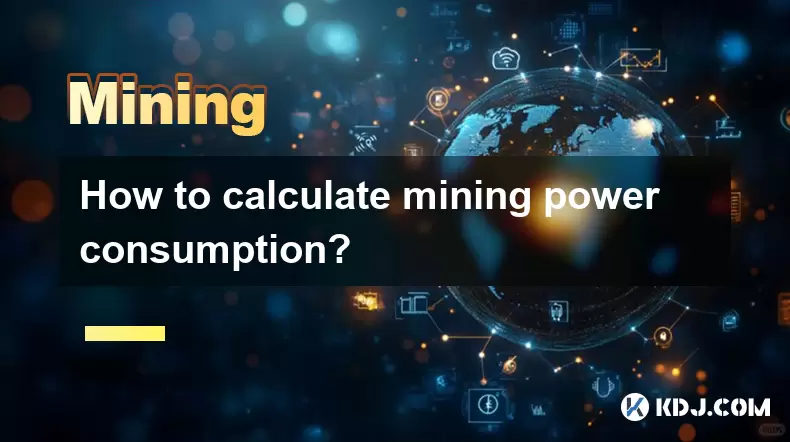-
 Bitcoin
Bitcoin $117,576.6195
-0.21% -
 Ethereum
Ethereum $2,938.5668
-1.35% -
 XRP
XRP $2.7699
4.60% -
 Tether USDt
Tether USDt $1.0003
0.01% -
 BNB
BNB $688.1624
-0.01% -
 Solana
Solana $160.5113
-1.95% -
 USDC
USDC $0.9999
0.01% -
 Dogecoin
Dogecoin $0.1976
-0.70% -
 TRON
TRON $0.3008
1.54% -
 Cardano
Cardano $0.7159
-2.16% -
 Hyperliquid
Hyperliquid $46.2240
2.04% -
 Stellar
Stellar $0.3966
22.03% -
 Sui
Sui $3.3928
-3.11% -
 Chainlink
Chainlink $15.1204
-2.43% -
 Bitcoin Cash
Bitcoin Cash $515.1741
-1.19% -
 Avalanche
Avalanche $20.8130
-0.90% -
 Hedera
Hedera $0.2001
-2.12% -
 UNUS SED LEO
UNUS SED LEO $9.0522
0.72% -
 Shiba Inu
Shiba Inu $0.0...01316
-2.01% -
 Toncoin
Toncoin $2.9843
0.61% -
 Litecoin
Litecoin $92.6745
-2.71% -
 Polkadot
Polkadot $3.9483
-0.06% -
 Monero
Monero $328.5347
1.10% -
 Dai
Dai $0.9998
0.01% -
 Ethena USDe
Ethena USDe $1.0006
-0.01% -
 Uniswap
Uniswap $8.3739
-6.50% -
 Bitget Token
Bitget Token $4.4241
-1.99% -
 Pepe
Pepe $0.0...01222
-3.96% -
 Aave
Aave $300.5203
-3.61% -
 Bittensor
Bittensor $382.2607
-1.92%
How to calculate mining power consumption?
Mining power consumption, measured in watts or kilowatts, directly impacts cryptocurrency mining profitability by influencing operational costs and efficiency.
Jul 13, 2025 at 02:00 am

Understanding Mining Power Consumption
Mining power consumption refers to the amount of electrical energy used by cryptocurrency mining hardware during the process of validating transactions and securing a blockchain. This metric is crucial for miners who want to assess profitability, manage operational costs, and optimize efficiency. The power consumption of mining equipment is typically measured in watts (W) or kilowatts (kW), and understanding how it's calculated can significantly impact long-term mining success.
Power consumption directly affects mining profitability. High electricity usage without adequate returns can lead to losses, especially in regions with expensive energy rates. Therefore, calculating mining power consumption accurately helps miners make informed decisions about hardware selection, location, and overall strategy.
Key Components Involved in Calculating Mining Power Consumption
To calculate mining power consumption, several key components must be considered:
- Hash rate: The speed at which a miner solves cryptographic puzzles, usually expressed in hashes per second (H/s).
- Efficiency rating: Measured in joules per terahash (J/TH), this indicates how much energy a miner uses per unit of hashing power.
- Electricity cost: The price paid per kilowatt-hour (kWh), which varies depending on location and provider.
- Hours of operation: How long the mining rig runs each day.
By combining these factors, miners can estimate both daily and monthly energy expenditures.
Step-by-Step Guide to Calculate Mining Power Consumption
To determine your mining power consumption, follow these steps:
- Check your mining hardware specifications: Look up the power draw of your mining device, often listed in watts (W). For example, an Antminer S19 Pro consumes approximately 3250W.
- Calculate watt-hours (Wh) per day: Multiply the power draw by the number of hours the miner operates daily. If it runs continuously: 3250W × 24 hours = 78,000 Wh/day.
- Convert to kilowatt-hours (kWh): Divide watt-hours by 1000. Using the above example: 78,000 ÷ 1000 = 78 kWh/day.
- Multiply by local electricity rate: If electricity costs $0.10 per kWh, then daily cost would be 78 × $0.10 = $7.80/day.
- Estimate monthly cost: Multiply daily cost by 30. In this case: $7.80 × 30 = $234/month.
This method provides a clear breakdown of how much power your mining rig uses and how much it will cost over time.
How to Monitor Real-Time Power Consumption
While theoretical calculations offer a baseline, real-time monitoring tools provide more accurate insights into actual power usage. Many modern mining rigs come with built-in software dashboards that display live energy consumption data.
Additionally, using a smart power meter like the Kill A Watt allows users to plug their mining equipment into the device and monitor voltage, current, and total kWh consumed. These devices are inexpensive and highly effective for tracking performance variations due to environmental factors or overclocking.
For large-scale operations, deploying a networked power distribution unit (PDU) enables centralized monitoring of multiple miners simultaneously. These units integrate with mining management platforms and offer granular control over power allocation and thermal conditions.
Factors That Influence Mining Power Consumption
Several variables can influence the actual power consumption of mining hardware:
- Ambient temperature: Higher temperatures may cause fans to run harder, increasing power draw.
- Overclocking settings: Boosting hash rates often increases energy use beyond manufacturer specifications.
- Voltage fluctuations: Unstable power supply can affect efficiency and increase consumption.
- Cooling systems: Additional cooling solutions such as air conditioners or immersion cooling add to the total energy footprint.
Being aware of these external influences ensures more precise estimations and better energy management strategies.
FAQs
Q: Can I reduce my mining power consumption without sacrificing hash rate?
A: Yes, through firmware optimization, undervolting, and improving airflow around mining rigs. These methods help maintain performance while lowering energy usage.
Q: Does mining pool membership affect power consumption?
A: No, joining a mining pool does not change the power consumption of your mining hardware. However, it can improve earnings consistency by pooling resources with other miners.
Q: Are there any online calculators specifically for mining power consumption?
A: Yes, websites like Coinwarz and Mining Calculator allow users to input their hardware specs and regional electricity rates to compute daily and monthly power costs.
Q: What’s the difference between power consumption and energy efficiency in mining?
A: Power consumption refers to the total amount of electricity used, while energy efficiency (measured in J/TH) reflects how effectively a miner converts that power into hashing performance.
Disclaimer:info@kdj.com
The information provided is not trading advice. kdj.com does not assume any responsibility for any investments made based on the information provided in this article. Cryptocurrencies are highly volatile and it is highly recommended that you invest with caution after thorough research!
If you believe that the content used on this website infringes your copyright, please contact us immediately (info@kdj.com) and we will delete it promptly.
- AVAX, RUVI, and AI Forecast: Spotting the Next Big Crypto Opportunity
- 2025-07-13 06:50:12
- Ripple's RLUSD Finds a Home: Swiss Bank AMINA Integrates the Stablecoin
- 2025-07-13 06:30:11
- Worldcoin Price Prediction: Navigating the Invalidation Zone
- 2025-07-13 06:30:11
- Meme Coins, Utility, and Hype: What's Real and What's Not?
- 2025-07-13 07:30:11
- Crypto Week Ignites Market Rally: Will the Surge Continue?
- 2025-07-13 06:35:12
- Ethereum Price Prediction: Will ETH Reach 100% Gains?
- 2025-07-13 04:50:12
Related knowledge

How to keep a mining rig cool
Jul 12,2025 at 01:42pm
Understanding the Importance of Cooling in Mining RigsCryptocurrency mining is an intensive process that places heavy demand on hardware components, p...

How much does it cost to start crypto mining?
Jul 13,2025 at 12:22am
Understanding the Basic Costs of Crypto MiningStarting crypto mining involves several upfront and ongoing expenses. The primary costs include hardware...

What is the most profitable crypto to mine?
Jul 13,2025 at 07:00am
Understanding Mining Profitability in CryptocurrencyWhen evaluating the most profitable crypto to mine, it's essential to consider several factors tha...

What do I need to start mining crypto?
Jul 13,2025 at 12:28am
Understanding the Basics of Crypto MiningCrypto mining is the process by which transactions are verified and added to a blockchain, and new coins are ...

How to find the best Dogecoin mining pool for me
Jul 12,2025 at 04:14pm
Understanding the Role of a Mining PoolWhen mining Dogecoin, joining a mining pool can significantly increase your chances of earning consistent rewar...

How often do Dogecoin mining pools payout
Jul 13,2025 at 04:08am
Understanding Dogecoin Mining PoolsDogecoin mining pools are collaborative groups of miners who combine their computational power to increase the chan...

How to keep a mining rig cool
Jul 12,2025 at 01:42pm
Understanding the Importance of Cooling in Mining RigsCryptocurrency mining is an intensive process that places heavy demand on hardware components, p...

How much does it cost to start crypto mining?
Jul 13,2025 at 12:22am
Understanding the Basic Costs of Crypto MiningStarting crypto mining involves several upfront and ongoing expenses. The primary costs include hardware...

What is the most profitable crypto to mine?
Jul 13,2025 at 07:00am
Understanding Mining Profitability in CryptocurrencyWhen evaluating the most profitable crypto to mine, it's essential to consider several factors tha...

What do I need to start mining crypto?
Jul 13,2025 at 12:28am
Understanding the Basics of Crypto MiningCrypto mining is the process by which transactions are verified and added to a blockchain, and new coins are ...

How to find the best Dogecoin mining pool for me
Jul 12,2025 at 04:14pm
Understanding the Role of a Mining PoolWhen mining Dogecoin, joining a mining pool can significantly increase your chances of earning consistent rewar...

How often do Dogecoin mining pools payout
Jul 13,2025 at 04:08am
Understanding Dogecoin Mining PoolsDogecoin mining pools are collaborative groups of miners who combine their computational power to increase the chan...
See all articles

























































































